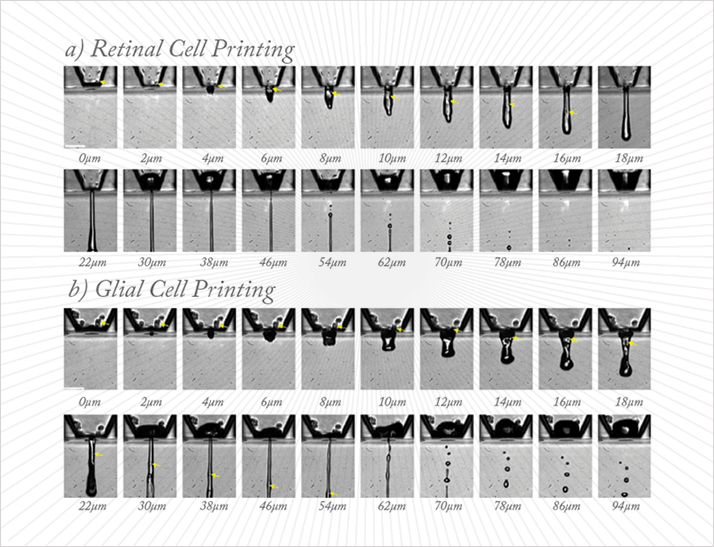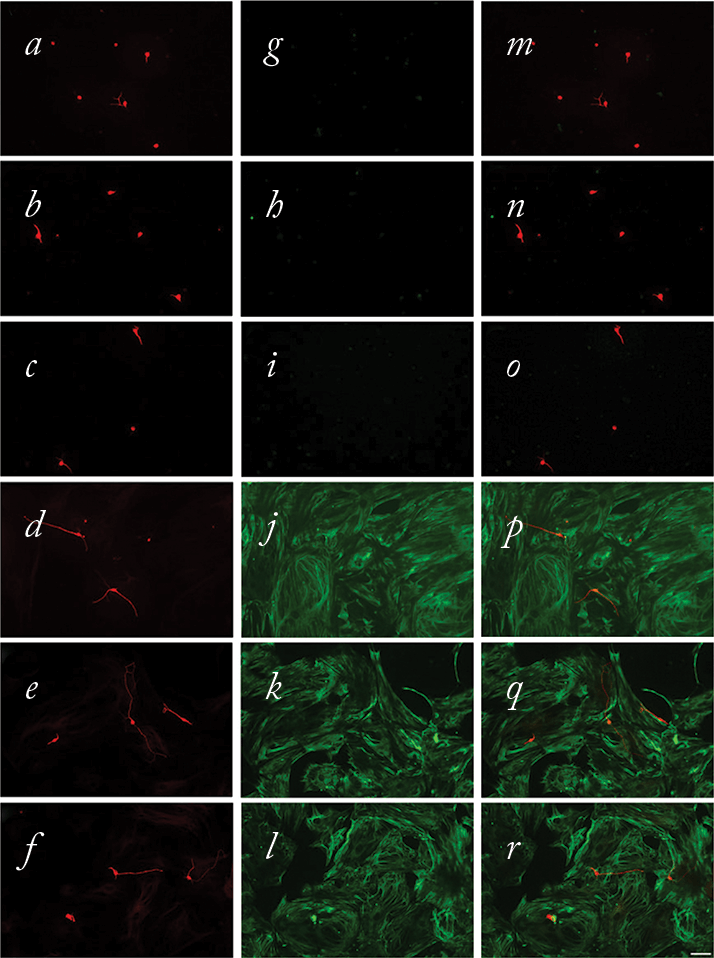
When a man tells you that, in ten years’ time, he envisages treating retinal diseases with a tiny inkjet printer head, you begin to wonder if he’s been drinking strong coffee with too much gusto that morning. But if that man is Keith Martin, Professor of Ophthalmology at the University of Cambridge, you need to revisit that diagnosis.
Martin has the only inkjet printer in the world that can print retinal ganglion cells (RGCs) and glia, and deliver a live product. He and colleagues Barbara Lorber, Wen-Kai Hsiao and Ian Hutchings recently published the method in Biofabrication (1), and it’s a story of happenstance, cross-pollination of ideas, and just giving things a go. Conventional wisdom had it that the cells of the rat central nervous system (CNS) are too fragile to be fired down a piezoelectric printer head; that printed glia wouldn’t function to provide support and nutrition to neurons, and that printed RGCs wouldn’t grow neurites (which are essential to communicate with other cells). Martin and colleagues did the experiments anyway. And they worked. As loss of certain retinal cell types is characteristic of many eye diseases, from age-related macular degeneration to glaucoma, the possibility of replacing them with cultured cells that function in situ is exciting. We spoke to Martin about it.
How did this project come about?
Barbara has been working in my lab for a number of years, trying to get RGCs to regenerate but this particular project was pure opportunism. Basically, it stems from a conversation with her husband, who works on inkjet printing technology, on the overlap between what we do and what he does. It turned into a Friday afternoon experiment: they decided to see if the cells could survive the printing process. Much to everyone’s surprise, they did. So it started there.Has this been done with CNS cell types before?
There are no reports in the literature of adult CNS cell printing being achieved successfully, so this is a first – we don’t know how many people have tried and failed.How exactly was it done?
The technique that we’ve developed involves separating adult retinal cells and loading them into a specially built piezoelectric inkjet printing device. This allows us to fire cells out of the print head (Figure 1) at about 30 mph, that’s about a thousand cells per second, and we can print them in precise patterns (Figure 2). This potentially gives us a way to recreate adult neuronal structures using printing technology.
Is the goal to produce a retina that you can implant into a patient to replace a damaged one?
Well, that’s a long way off. There are a number of more immediate ways that this might be useful. For example, printing retinal pigment epithelial (RPE) cells or photoreceptors, cell types that are lost specifically in certain conditions. One could envisage using the printing technology to create an implant outside the eye and then inserting it. With further miniaturization, it may be possible to spray cells within the eye, as part of vitreoretinal surgery. That’s what we’re looking to do, but it is far too early to talk about achieving it.Might the optimal combination be a retinal prosthesis sensor and appropriate printed cells around it?
Yes. I think the biggest advances will come not from using one of these technologies alone, but by combining them, coming at the problem from different approaches. The interface between the electronic and the biological approaches is one such combination.Ultimately do you plan to build a retina? If so, what’s the scaffold that you’ll build it on – glia? Do other cell types, like those of the vasculature need to be incorporated?
We’re certainly looking at other cell types. Glial-neuronal interactions are obviously very important for the health of neurons – they can’t function in the long term without the support of glia. In terms of regeneration, the glial effect really promotes the axonal regeneration; we saw far better axon regeneration from the RGCs. We are a long way from being able to replicate the vasculature. But there are other ways of stimulating blood vessel growth. In degenerative diseases, the blood supply is not so much of a problem. For ischemic conditions it might be, but we’re sticking to the neurons and glia just at the moment.

In a decade’s time, where do you think this technology will be?
We’d like to be using this as part of the treatment for regenerating the retina – that’s our main goal. As I said, I don’t think that this is the whole solution but it will help. We will look at manufacturing artificial neuronal tissue and also at repairing what’s already there.Will it be in clinical trials in 10 years’ time?
Yes, that’s the timescale we’re looking at. In terms of printing RPEs and photoreceptors it might even be a bit quicker than that, as those are more straightforward cell types. We started in RGCs because my main interest is in glaucoma – a crucial element in the pathophysiology of all forms of glaucoma is RGC death. However, people who have looked at the work are saying that it may well be more relevant to replacing RPE and photoreceptors.What about the cornea? Could you repair selectively damaged areas with inkjet cell technology?
I think that’s perfectly possible, and it may well be easier than the neuronal cell types. I’m not sure anyone has tried as yet. This is a very adaptable and modifiable technology and if fragile neurons can survive it, then I’m sure that corneal cells will.References
- B. Lorber et al., “Adult rat retinal ganglion cells and glia can be printed by piezoelectric inkjet printing”, Biofabrication, 6, 015001 Epub ahead of print] (2013). doi:10.1088/1758-5082/6/1/015001.
